A harsh verdict on jails
September 28, 2012
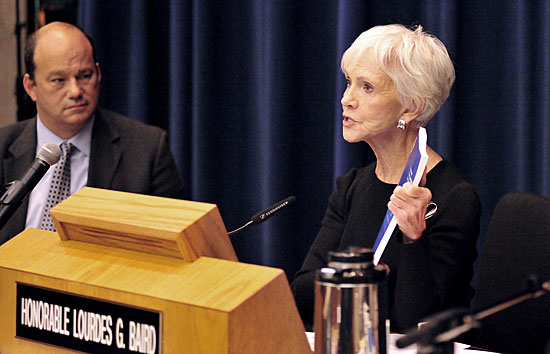
Commission Chair Lourdes Baird says it's now up to the supervisors and sheriff to enact proposed reforms.
After nearly a year of investigation, the Citizens’ Commission on Jail Violence released its final report on Friday, concluding that comprehensive reforms are needed throughout the Los Angeles County Sheriff’s Department because Sheriff Lee Baca and some of his top managers failed to confront persistent deputy brutality behind the bars.
“The commission heard repeated and consistent accounts of leadership failings in the department over a period of years,” the seven-member panel wrote. “Thus, it is not surprising that supervisors struggled to control deputy insubordination, inappropriate treatment of inmates, and aggressive conduct both on and off duty by deputies working in Custody.”
(Read the executive summary and entire report.)
The commission, which was appointed last October by the Los Angeles County Board of Supervisors, was unsparing in its criticism of Baca and his second-in-command, Paul Tanaka.
“Both Sheriff Baca and Undersheriff Tanaka have, in different ways, enabled or failed to remediate overly aggressive deputy behavior as well as lax and untimely discipline of deputy misconduct in the jails for too long.”
What’s more, according to the report, Baca failed to hold Tanaka and other senior leaders accountable for serious lapses in conduct and judgment, “thereby sending a troubling message to a department in need of a clear directive that accountability is expected and will be enforced at all levels.”
During the commission’s Friday meeting at the downtown Hall of Administration, the strongest rebuke of Baca among the panelists came from retired federal judge Robert Bonner.
“The fact is that the sheriff is not someone as a manager who wanted to hear about problems,” Bonner said. “He seems to have had his head in the sand, dealing with other problems, ones that perhaps interested him more—but not minding the store when it came to running the jail in accordance with lawful and sound use of force policies.”
In all, Bonner and his colleagues issued more than 60 recommendations aimed at improving training and accountability within the nation’s largest local jail system. Most significantly, the commissioners called for the creation of an Office of Inspector General, which would essentially consolidate the responsibilities of existing oversight bodies “who suffer from too many gaps among them to effectuate comprehensive and lasting changes in the Department.”
“Too often, the department has paid lip-service to recommendations of these oversight bodies knowing that there has not been sustained follow-up to ensure their recommendations are carried out.”
The proposed Inspector General’s office would report directly to the Board of Supervisors and would operate—in name and function—similarly to the agency that oversees sensitive issues within the Los Angeles Police Department. It reports to the civilian Police Commission.
To enhance accountability within custody facilities, the jail commission also recommended the creation of a new position—assistant sheriff for custody—that would be staffed by “a professional and experienced corrections leader,” presumably someone outside the existing chain of command.
The commission further called for tougher discipline for excessive force and dishonesty, a simplification of the disciplinary system and the creation of a new investigations division within the department that would report directly to a chief.
Ultimately, it is the publicly elected sheriff who’ll decide whether many of the proposals for internal reform will be implemented. Baca, confronted with a cresting controversy over jail violence last year, initiated a series of measures that have significantly reduced the use of excessive force. The commission acknowledged Baca’s efforts but also took a swipe: “Simply stated, the Sheriff did not pay enough attention to the jails until external events forced him to do so.”
Many of the sharply-worded findings in the jail commission’s report were revealed three weeks ago in a series of presentations by the commission’s volunteer staff of lawyers, some of whom are former federal prosecutors and had served on other police reform bodies, including the Christopher Commission, which was created after the 1991 LAPD beating of the late Rodney G. King.
The lawyers reviewed thousands of documents and interviewed more than 150 witnesses, including current and former members of the Sheriff’s Department. Some of those witnesses testified publicly that Tanaka and his hand-picked subordinates had consistently frustrated their efforts to crackdown on violent deputies.
“Not only did he fail to identify and correct problems,” the commissioners concluded, “he exacerbated them.”
The report also criticized Tanaka for helping to create a perception of “patronage and favoritism in promotion and assignment decisions” in the department.
Tanaka, who’s an elected official in Gardena in addition to his sheriff’s department job, has accepted $108,311 in campaign contributions from 336 Sheriff’s Department employees from 1998-2011, the report said.
“There is a perception among rank-and-file employees that contributing to Tanaka’s campaigns is important to promotional and assignment decisions,” the report said, pointing out that in a few of the races Tanaka was running unopposed and that “numerous LASD contributors did not live in the City of Gardena.”
“Concerns were expressed by employees at almost every level of the department,” the report continued. “Even employees who did not contribute felt pressure to attend campaign events in order to have ‘face time’ with the Undersheriff.”
Tanaka is not alone in accepting campaign contributions from the sheriff’s staff, the report said, noting that Baca also has received at least $97,850 from department staff between 1999 and 2011. However, those contributions made up just 7% of Baca’s overall contributions, whereas staff contributions accounted for about 30% of the campaign funds raised by Tanaka.
The commission noted that there is no formal sheriff’s department policy on accepting campaign donations; Baca has told the commission that he’s in the process of developing one.
Despite the unremittingly grim nature of their findings, the commissioners said they believe their recommendations, if implemented, “can bring about lasting and meaningful changes within the Los Angeles County jails.”
Commissioner Jim McDonnell, the Long Beach police chief, noted in his comments that there has been no great public outcry or groundswell to fix the years of documented problems inside the jails.
“Why is this? The people most directly impacted don’t have a lot of credibility in the eyes of the public, nor does the behavior that got them to county jail generate much in the way of sympathy and support,” he said. “That’s just the reality that we face. That makes the responsibility of this board that much more critical.”
“My concern,” he added, “is that if serious remedial action is not taken immediately, federal authorities may pursue legal action against the county, which would likely result in a consent decree. That would an onerous, labor intensive and very expensive path to reform.”
Posted 9/28/12
Competing with Carmageddon II
September 27, 2012

Although officials are urging people to "play local," thousands of L.A. triathalon participants will be snaking through the region.
When the organizers of the Herbalife Triathlon Los Angeles found out that Carmageddon II was going to coincide with their race date, “our reaction was probably unprintable,” jokes Jan Fambro.
“We had settled on this date 11 months ago,” says Fambro, who is handing media relations for the annual event, in which competitors will swim, bike and run from Venice Beach to Downtown Los Angeles on Sunday morning.
“It had gone through the city, the county, the whole approval process. We had looked at other events happening in L.A. and checked with sponsors. This event is the second-to-last event of a national, 7-race series, and the championship is scheduled for October 7. We have about 2,500 competitors coming in from 28 states and 11 countries—and then the announcement came out this summer.”
By that time, however, the triathlon date was locked in, says Fambro. “These were the cards that we had been dealt and we had no choice but to pick ‘em up and play.”
That attitude is being echoed around the county this weekend, as a massive freeway improvement project reprises the shutdown of the 405 between the 10 and the 101. The last Carmageddon, as it was dubbed, was wildly successful, despite the fact that L.A. had to spend the weekend without the use of the nation’s most heavily traveled stretch of freeway.
But this time the situation is considerably more complicated. Carmageddon II is falling during the full swing of autumn, not during the summer when schools were out and much of L.A. was on vacation. The weekend will have a lot more going on than just one Westside freeway closure: The Dodgers will be playing the Rockies. Placido Domingo will be singing “The Two Foscari” at the Los Angeles Opera. The Hollywood Bowl will have The Go-Gos on Saturday and Wilco on Sunday.
West Hollywood is expecting 25,000 people to meet Deepak Chopra and Rocco Dispirito at its annual outdoor book fair. The Getty Villa in Malibu will be open. And then there’s Los Angeles International Airport, which is expecting 172,000 passengers, 66,000 vehicles and about 20,000 employees to come in and out.
Still, of all the diversions that have been forced to belatedly incorporate Carmageddon II into their planning, the triathlon has had the most ironic set of challenges. While the rest of Southern California is being urged to stay home and steer clear of the roads on Sunday, the thousands of triathletes and their fans will be out in full force on the pavement, crisscrossing Los Angeles from the shore to Staples Center, first in the water, then on bicycles and finally on foot via a 6-mile loop Downtown.
On top of that, the bike course will be shutting down sections of surface streets for part of the morning, closing Venice Boulevard from the beach to the 10, Fairfax Boulevard from the 10 to Olympic Boulevard and Olympic to Staples Center. All streets should be open by noon.
Fambro says factoring Carmageddon II into the triathlon was a scramble, but not as difficult as it might have been. For one thing, she noted, the course—which hasn’t changed in three years—falls outside the area immediately impacted by the closure. The finish line, where most of the action is, will be downtown, far from the 405 at LA Live.
“The reality is, it mainly affects those people who are coming from the San Fernando Valley and parts further west,” she says. Participants making that trek are being advised to allow extra time and to use Pacific Coast Highway as an alternate route down to Venice before the starting gun is fired for the first wave of triathletes at 7:15 am.
Still, the moment the Carmageddon II date was announced, she says, the triathlon organizers began meeting weekly with Los Angeles police and transportation officials, and sending out regular transportation updates and reminders to race participants. A bike-friendly shuttle for both spectators and triathletes was set up to run all day between Downtown and Venice, and extra hotel discounts were lined up near the start and finish lines for triathletes who preferred to make a “stay-cation” of it.
“Our staff has been very positive about the coordination,” says Fambro. “I’ve heard nothing but good stories coming out of those departmental meetings.”
And, she predicts, the extra challenge will probably add spice to the competition.
“This is going to be one of those great triathlete stories,” she jokes, “about how they came to L.A. on the legendary weekend of Carmageddon II.”
To get to the Triathlon—or other popular events around town this weekend—via public transportation, check out these helpful tips from Metro’s blog The Source.
Posted 9/25/12
Let’s make it a non-event
September 27, 2012
When it comes to traffic, nobody is savvier than the L.A. driver.
We check the traffic report before we leave the house, guard favorite surface street alternatives like state secrets, and know that a fender-bender on one side of town can quickly morph into commuting misery many miles away.
In other words, we know that we’re all in this together.
That’s why we were able to prove all the skeptics wrong last year when we sailed through Carmageddon without a SigAlert in sight. People heeded the warnings, stayed well away from the 405 Project construction zone and—strangely enough—ended up making it a weekend that Los Angeles long will remember fondly.
Now we have an opportunity to do it all again. Our destiny is once more in our own hands as Carmageddon II closes down a 10-mile stretch of the nation’s busiest freeway, the 405, for 53 straight hours this weekend to allow for the safe demolition of the Mulholland Bridge as part of an ambitious freeway widening and modernization project.
The first on- and off-ramps will start closing at 7 p.m. on Friday, and by midnight, the entire freeway will be shut down in both directions, all the way from the 10 Freeway to the 101.
Clearly, despite the positive outcome last summer, the potential for major gridlock is still there. You can’t take away a route traveled by a half-million motorists every weekend and expect things to go smoothly—unless we all change our ways for 53 hours.
But Angelenos proved during the first Carmageddon that changing our ways isn’t just about meeting our civic responsibility. It also can be a heck of a lot of fun.
So please, follow the official advice to stay out of the construction area and eat, shop and play locally. It’s a welcome chance to get to know our own neighborhoods better, to patronize a local business that we’ve been meaning to try, or to check out a nearby arts happening.
Or if you prefer to venture out of your neighborhood, leave your car at home and test-drive our constantly improving public transit system. Since the first Carmageddon, Los Angeles has gained more than 12 miles of new mass transit lines: the Expo Line light rail running from downtown L.A. to Culver City, and the Orange Line Extension rapid transit busway from Warner Center to Chatsworth.
This weekend, both lines can serve as portals to the big wide world beyond the Carmageddon II impact zone, especially for residents of the Westside and the San Fernando Valley. Riding the Orange Line Extension to Chatsworth, for instance, makes it possible to connect with Amtrak and ride up the coast for a stress-free, car-free weekend in Santa Barbara. Hopping aboard Expo in Culver City offers an easy way to get to destinations including the county Natural History Museum in Exposition Park or LA Live downtown, where the Herbalife Triathlon Los Angeles finishes around mid-day on Sunday. The possibilities are endless.
However you spend Carmageddon II weekend, have fun, stay out of the car as much as you can and try to see it as a needed respite from our busy, on-the-go lives.
Monday morning will be here before you know it.
For detailed maps of where the construction is happening, and how to avoid it, click here. In addition, Caltrans’ new QuickMap offers up-to-the-minute reports on road conditions. Be sure to click the “slow-fast” icon at the top of the left-hand column for color-coded real-time traffic information.
Posted 9/27/12
Have they got a deal for you
September 27, 2012
Sure, you could sit around and mope all weekend, fretting about the 53-hour closure of the 405 Freeway.
Or you could come out of Carmageddon II with a free bagel, a discounted letterman jacket and some newfound pole dancing skills.
Already feeling separation anxiety from your car? A complimentary 15-minute chair massage from Physical Therapy Solutions could help you cope. Fear of driving in a post-Carmageddon world? Hypnosis might work, and the price of the first session is 50% off at Scripting Your LifePlay.
As Los Angeles prepares to confront a second Carmageddon weekend on Sept. 29-30, the discounts, freebies and special offers are flying. Many neighborhood businesses are hoping for a boost from local customers sticking close to home for the weekend, as well as from those ditching their cars in favor of public transportation to get to attractions and services throughout the region.
Metro, which along with Caltrans is responsible for the massive 405 improvements project that includes Carmageddon II, has been working feverishly to turn the lemon of a lengthy freeway closure into some sweet, bargain-hunting lemonade.
An unprecedented expansion of the agency’s 10-year-old Destination Discounts program has brought hundreds of businesses into a special Carmageddon-themed initiative, complete with interactive map.
“To just say to people ‘eat/shop/play locally’ is not enough. It needed to have legs, it needed to have incentives attached to make it real, to make it viable,” said Fran Curbello, the Metro communications manager heading up the initiative. “We gave our business community a chance to be part of the solution.”
While some of the deals require presentation of a Metro TAP card, other businesses are extending their discounts and freebies to all comers this weekend—no questions asked.
At Select Beer Store in Redondo Beach, for instance, customers can just say “Carmageddon” to claim a free bag of chips as they order a brew (while supplies last!)
Although Metro’s primary objective is to get people riding public transit, it also has an interest in helping folks find diversions close to home this weekend. Curbello suspects that most merchants won’t particularly care whether their customers arrive by bus, bike or (gasp) automobile, as long they’re staying in the neighborhood—and away from the 405 construction zone.
“It’s good business,” she said.
The participants range from mom-and-pop eateries to big hotels and major museums. The Los Angeles County Museum of Art, for example, is offering ½ price admission to everyone who comes “via an alternate mode of transportation.” At another point on the artistic spectrum, Madame Tussauds Hollywood is having some fun with numbers and offering a 40.5% discount (get it?) on adult and children’s tickets. (Enter promo code 4050 if ordering online.)
Even for armchair bargain-hunters, Metro’s interactive Eat/Shop/Play map is worth a few clicks, just to marvel at the idiosyncratic glories of Los Angeles itself as it goes on sale for the weekend.
There are traveling notaries (J Lawson Mobile Notary of North Hollywood) and educators who make house calls (Tutor Doctor of Van Nuys.) There are horses to ride at the Sunset Ranch near the Hollywood sign and Segways for hire in the South Bay. Xtreme Martial Arts is offering discounts in North Hollywood and Rise-The Studio in Santa Monica is pushing 25% off all its “meditative and playful pole dancing classes” on Sept. 29 and 30.
Then there’s the food. Lots of it.
Most of the participating restaurants are offering discounts, but many are throwing in freebies.
“I’m ready to give away some hot links, that’s what I’m gonna do,” said Kevin Huling, owner of Les Sisters Southern Kitchen in Chatsworth, who’s hoping the new Orange Line extension will help bring customers his way. “I am hoping more people come down here. It’s a bit of a walk, but we’re walking distance from the Chatsworth Station.”
The moveable feast also includes free naan bread at Saffron in the Baldwin Hills Crenshaw Plaza, an on-the-house bagel for transit riders at the Onegeneration booth at the Encino Farmers Market, and a free side dish or beverage at Mel’s Fish Shack on West Jefferson, near the Expo Line’s Farmdale Station.
Those seeking a more lasting souvenir of Carmageddon II might consider making an automotive style statement with tire rims from EZ Rims 4 Rent on Crenshaw Boulevard. For this weekend, they’re offering $50 off purchase and rent-to-own transactions.
“Hopefully it does pretty well,” manager Fidel Ozuna said. “We are anticipating a pretty decent weekend.”
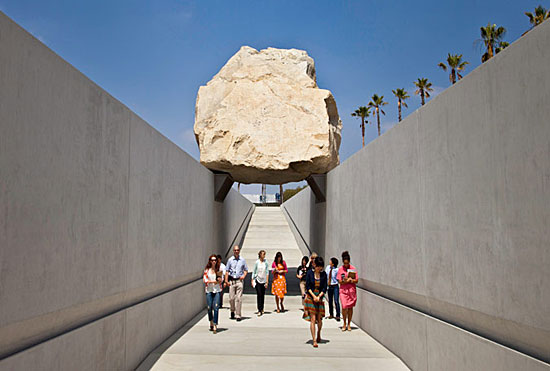
Have you seen The Rock yet? LACMA's half price this weekend if you get there via alternate transportation.
Posted 9/27/12
Check out Carmageddon II detour maps
September 25, 2012
If you absolutely, positively must drive this weekend, here’s your road map for steering clear of trouble.
While there’s no official map of surface street routes for navigating Carmageddon II, Metro has produced maps showing how local and regional freeways will move around the construction zone.
Wherever you’re heading, your object should be to stay as far away as possible from the 405 Freeway, which will be closed from the 10 to the 101 on Saturday, Sept. 29 and Sunday, Sept. 30. Ramps will begin closing 7 p.m on Friday, Sept. 28, with full closure of the freeway in both directions beginning at midnight.
Things are set to reopen, after a full 53 hours of construction work, at 5 a.m. on Monday, Oct. 1. The work is needed to demolish the north side of the Mulholland Bridge, which will be torn down and rebuilt as part of a massive improvements project through the Sepulveda Pass.
The official mantra is stay close to home, patronize local businesses, savor your own neighborhood and give your car the weekend off. But if you have to drive, these maps will help guide you around the project zone and Southern California as a whole.
For a closer look at the northbound closure zone, click here. The southbound details are mapped out here.
Posted 9/25/12
A milestone gift for L.A.’s trails
September 20, 2012

The Backbone Trail is one of 7 projects benefiting from an infusion of grant funds. Photo/National Park Service
The Backbone Trail is one celebrity-owned property and an easement short of completion. The Cold Creek High Trail is just three parcels shy of being in public hands. Just one 700-foot path and hikers and horseback riders on the Las Virgenes Creek Trail will no longer have to pull up short at the Ventura Freeway.
But those gaps and more may soon be bridged with the help of some $3.2 million in county grants.
Generated by the county’s 1996 Proposition A park bond, and approved by the Board of Supervisors on Tuesday, the grants promise to make a big difference for nature enthusiasts in the Santa Monica Mountains, where some of Southern California’s best-known and most beloved trails are tantalizingly close to full public ownership.
Although the mountains have long been regarded as a public treasure, their property lines are actually a public-private patchwork, and many trails, habitats and watersheds run through private backyards and no-trespassing areas. Environmental advocates have worked for decades to acquire key lots and easements, and to forge connections among the trails that crisscross the peaks and canyons.
This week’s grants, spread among seven projects and ranging from $59,438 to $500,000, come from a pot that is periodically disbursed to fund parkland and open spaces, but this round is expected to make an especially big impact.
One $500,000 grant, for example, would get the ball rolling on a 110-acre addition to the Santa Monica Mountains National Recreation Area. The acreage, in Malibu’s Ramirez Canyon, “is a critical element . . . in filling a major gap in public ownership in the Santa Monica Mountains,” says Sam Hodder, who directs the Trust for Public Land in California. Among other things, Hodder says, the property includes a sensitive oak woodland habitat and a vulnerable stream that flows directly into Santa Monica Bay.
Another $500,000 grant, to the Mountains Restoration Trust, would complete the acquisition of the last three private parcels along the Cold Creek High Trail Project, adding 17.4 acres and 1.63 miles of trail between Stunt and Cold Canyon Roads. The extension will not only restore a longstanding neighborhood hiking and equestrian trail that was badly damaged in the fires and floods of the early 1990s, but—more importantly—will protect the Cold Creek watershed, a key habitat for mountain wildlife.
A third $500,000 chunk of change will go toward the Don Wallace Trail Project, a new path that will finally give hikers and equestrians safe passage down through the underpasses at the 101 Freeway and Agoura Road in Calabasas and on into Malibu Creek State Park.
And perhaps the most exciting grant, for $465,000, will allow the National Park Service to complete the Backbone Trail, one of the best known and most heavily used trails in Los Angeles County. For some 30 years, more than 35 organizations have been trying to obtain a public right-of-way across all of the 177 pieces of property that the trail crosses as it wends its way over the crest of the Santa Monica Mountains to the Pacific.
As of this year, only two parcels remained outstanding. A tentative agreement to convey an easement for one of them recently was reached with the National Park Service, according to Melanie Beck, who handles land deals for the NPS in the Santa Monica Mountains.
When the easement is finalized, it will leave just one incomplete spot on the 65-mile trail: a 40-acre swath of chaparral in Trancas Canyon owned by former Gov. Arnold Schwarzenegger and Betty Weider, the 77-year-old wife of Schwarzenegger’s longtime friend and business partner, the fitness magazine publisher Joe Weider.
A spokesman for the governor confirmed this week that Schwarzenegger and Weider were approached years ago about the acreage but no agreement was reached. Schwarzenegger, the spokesman added, “remains open to meeting and talking about it again.” Weider could not immediately be reached.
The grants represent a big moment in the long-running effort to create a network of public pathways through the mountains.
“We need to celebrate the years of hard work that have gone into building the trail system,” Beck said. “With these accomplishments, we can help share and publicize this trail system with the many groups that wish to enjoy the Santa Monica Mountains long into the future.”
Posted 9/20/12
Chat with Zev about Carmageddon II
September 20, 2012
Carmageddon II is just a week away, and the pressure’s on to make sure that we get through the sequel just as successfully as we navigated the original. This Friday, Los Angeles County Supervisor and Metro Board member Zev Yaroslavsky will help folks finalize their plans and preparations by leading a live internet chat.
Getting through the weekend-long closure of a major section of the 405 means staying away from the area and, if possible, making it a car-light or car-free weekend close to home. The official mantra is “Eat, shop and play locally” and art and cycling enthusiasts have plenty of ideas to help you embrace your inner locavore.
The live chat will offer information about the 405 Project and the September 29-30 freeway closure. Participants also can submit suggestions and share their ideas and plans for the weekend. To join in, visit metro.net/chat from noon to 1 p.m. on Friday, September 21, or send advance questions to [email protected].
Posted 9/20/12
Taking Tiny for a ride
September 19, 2012

L.A. County dogs, especially small "fluffies" and Chihuahuas, are finding new homes around the country.
Los Angeles has plenty of big, famous exports: movies, food trends, celebrity gossip.
And at least one sought-after small one: the pint-sized rescue dog.
While dogs in Los Angeles County’s busy urban animal shelters can range from dachshunds to Saint Bernards, there’s an abundance of the little ones coveted by would-be adopters in other areas.
So a thriving pet transport circuit has sprung up. Since 2009, 3,457 L.A. County shelter dogs have found their way to Utah, Oregon, Montana, Colorado, Virginia and New York. Within California, they’ve hit the road for new homes in San Diego and Santa Cruz, with stops along the way at closer, less-crowded shelters in Irvine and Glendale. With 1,219 dogs transported so far this year, 2012 is the busiest yet for county canine relocations.
To land a quick home in another ZIP code, the transplanted L.A. dogs must be healthy, friendly and (generally) small. “Anything under 30 pounds, they’ll take. We could ship 5 Chihuahuas for every Labrador,” said Marcia Mayeda, the county’s director of Animal Care and Control. “It’s filling a void in their area.”
Because of the sheer size of its shelter population and the popularity of certain petite breeds here, Los Angeles County is able to share its canine wealth with places that have a shortage of adoptable small dogs.
The dog-moving operations have been funded by non-profit organizations like Best Friends Animal Society and the Heigl Foundation, established by actress Katherine Heigl.
Now the American Society for the Prevention of Cruelty to Animals is getting in on the act. With funding from New York philanthropist Carroll Petrie, ASPCA aims to save 16,600 dogs across the country in the next 8 months by helping to transport them out of crowded shelters. The Los Angeles County Board of Supervisors this week approved the county’s participation in the Carroll Petrie Foundation Dog Rescue Project. A subsidy of $50 per dog will allow the transfer of some 50 dogs a month from the county’s Downey Animal Care Center to the Mission Viejo Animal Services Department and, potentially, to other shelters as well.
The Chihuahua popularity boom—fostered by rampant media images of well-heeled pooches traveling around in celebutantes’ purses and stealing scenes in movies like Legally Blonde and Beverly Hills Chihuahua—contributed to overbreeding and a tiny-dog population explosion in L.A. and other California shelters in recent years. (On Tuesday, of the 1,521 dogs in Los Angeles County shelters, nearly a quarter—378—were Chihuahuas or Chihuahua mixes.)
Some highly-publicized relocation efforts, such as Project Flying Chihuahuas and Operation Chihuahua, have helped move hundreds of the little pooches from California to new homes around the country.
But now some areas are beginning to contend with a Chihuahua boom of their own, and have had to limit the number they accept.
Portland, for example, is “kind of saturated” with Chihuahuas these days, although the Oregon Humane Society still welcomes a twice-a-month shipment of other kinds of dogs from L.A., said Jennifer Barta, the agency’s “second chance” coordinator.
“Everybody here loves the L.A. dogs,” Barta said, marveling at how the transplanted pups endure “an incredibly long journey” yet still manage to come out wagging. “It’s just pretty phenomenal.”
Robin Harmon, “Pup My Ride” coordinator for the Best Friends group, has a good sense of what kinds of dogs are moving where.
A vanload of dogs that traveled from Los Angeles to Salt Lake City this week was “half Chihuahuas and a half what we call ‘fluffies’—poodle and terrier mixes,” Harmon said.
An upcoming shipment to New York, she said, will “probably have at least 30 Chihuahuas.” One of those L.A. expats will be going to the Hamptons, she said: “We’ve been laughing about that.”
An exception to the small dog rule: Billings, Montana, which Harmon said can be counted on to welcome four or five German Shepherds, along with other smaller dogs, from L.A. every couple of months.
Cats, alas, are another matter. “We are pretty well inundated with homeless cats of our own,” said Jessica Almeida of the Humane Society of Utah.
Even though the transport system can’t solve all the problems of homeless pets, redistributing the adoptable dog population makes it easier for conscientious consumers around the country to do the right thing when it comes to bringing home an animal.
“People want to go to a shelter,” said Mayeda, the county’s Animal Care and Control director. “They want to save a life.”
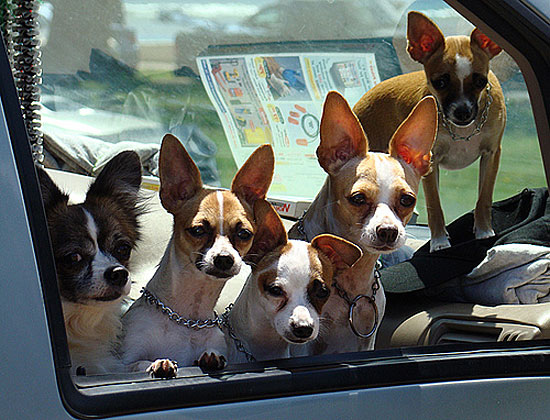
L.A. County shelters have plenty of Chihuahuas to share, but other areas, like Portland, are catching up.
Posted 9/19/12
A Lincoln moment
September 13, 2012
 In the early years of World War II, composer Aaron Copland was pressed into action, called upon to undertake a uniquely important duty to a nation in need. He was commissioned by conductor Andre Kostelanetz to write something that might inspire Americans as they battled forces bent on domination and destruction.
In the early years of World War II, composer Aaron Copland was pressed into action, called upon to undertake a uniquely important duty to a nation in need. He was commissioned by conductor Andre Kostelanetz to write something that might inspire Americans as they battled forces bent on domination and destruction.
At the heart of this composition would be the powerful words of a man who, nearly eight decades earlier, had guided our country through its darkest chapter when its very fabric was being ripped apart.
Copland, in his landmark work, turned to the speeches of Abraham Lincoln, interspersing excerpts with soaring orchestration. He called it “A Lincoln Portrait.” In a 1943 interview, Copland said his goal was to find passages that seemed relevant to the challenges at hand. Only once did he quote from a famous speech.
In the many years since then, the narrative of “A Lincoln Portrait” has been read by voices as diverse as America itself, including some of our finest actors, such as Gregory Peck, Paul Newman and Henry Fonda. On Tuesday, at the Hollywood Bowl, a Los Angeles County Supervisor with a long affection for Copland got his turn.
For me, the moment was especially meaningful because it fell on such a solemn date—September 11. And as in decades past, Lincoln’s words had transcended the years and circumstances of their day. Indeed, on the very night I appeared with the Los Angeles Philharmonic, our consulate in Libya and our embassy in Egypt had come under deadly assault.
For the entire text of “A Lincoln Portrait,” click here. Above, you can watch video highlights from the performance at The Bowl. But I’ll leave you with this resonant passage, which Copland drew from Lincoln’s annual message to Congress in December, 1862: “The dogmas of the past are inadequate to the stormy present. The occasion is piled high with difficulty and we must rise with the occasion. As our case is new, so must we think anew and act anew.”
Posted 9/13/12




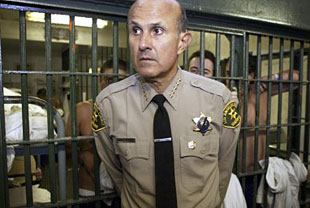
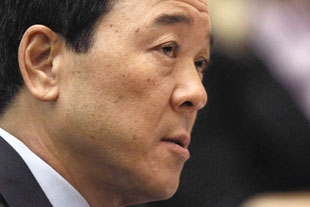
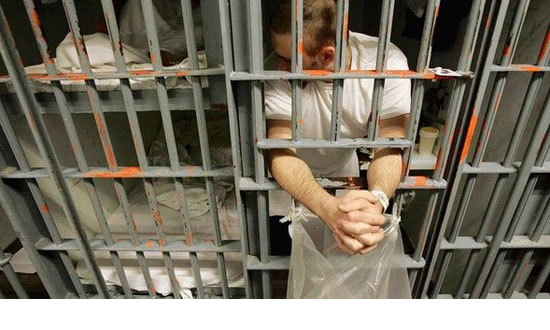
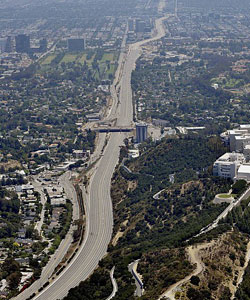
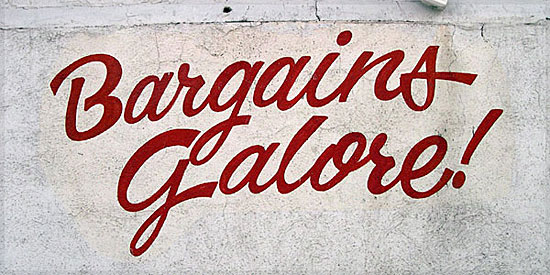

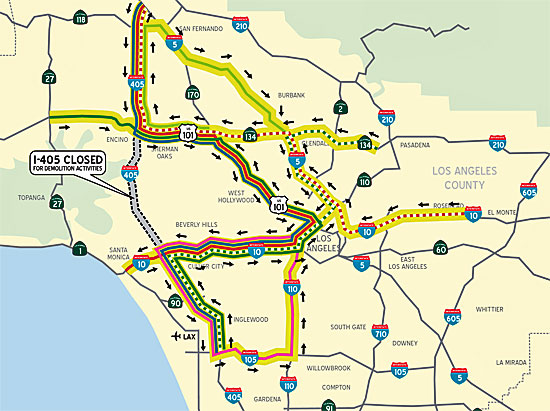
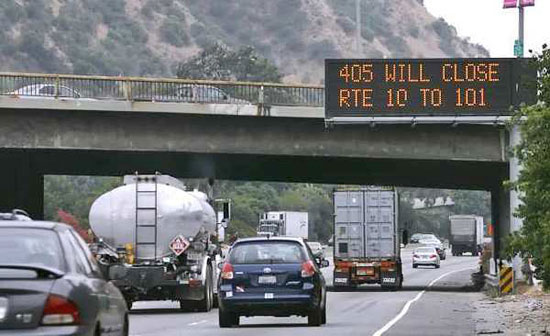
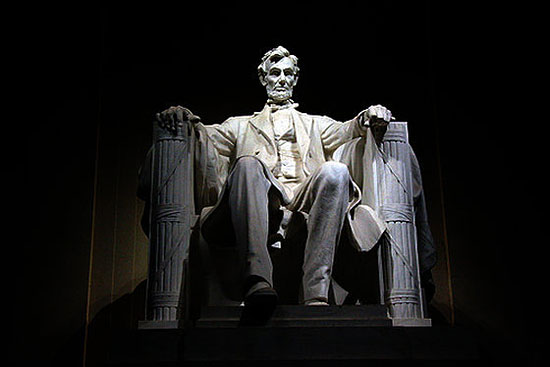





 Check for the latest closure information
Check for the latest closure information








